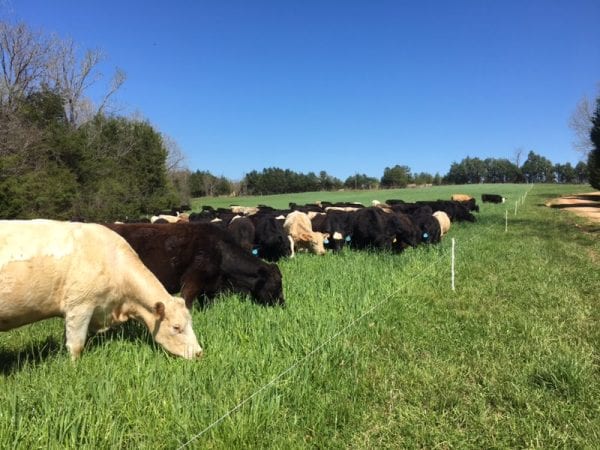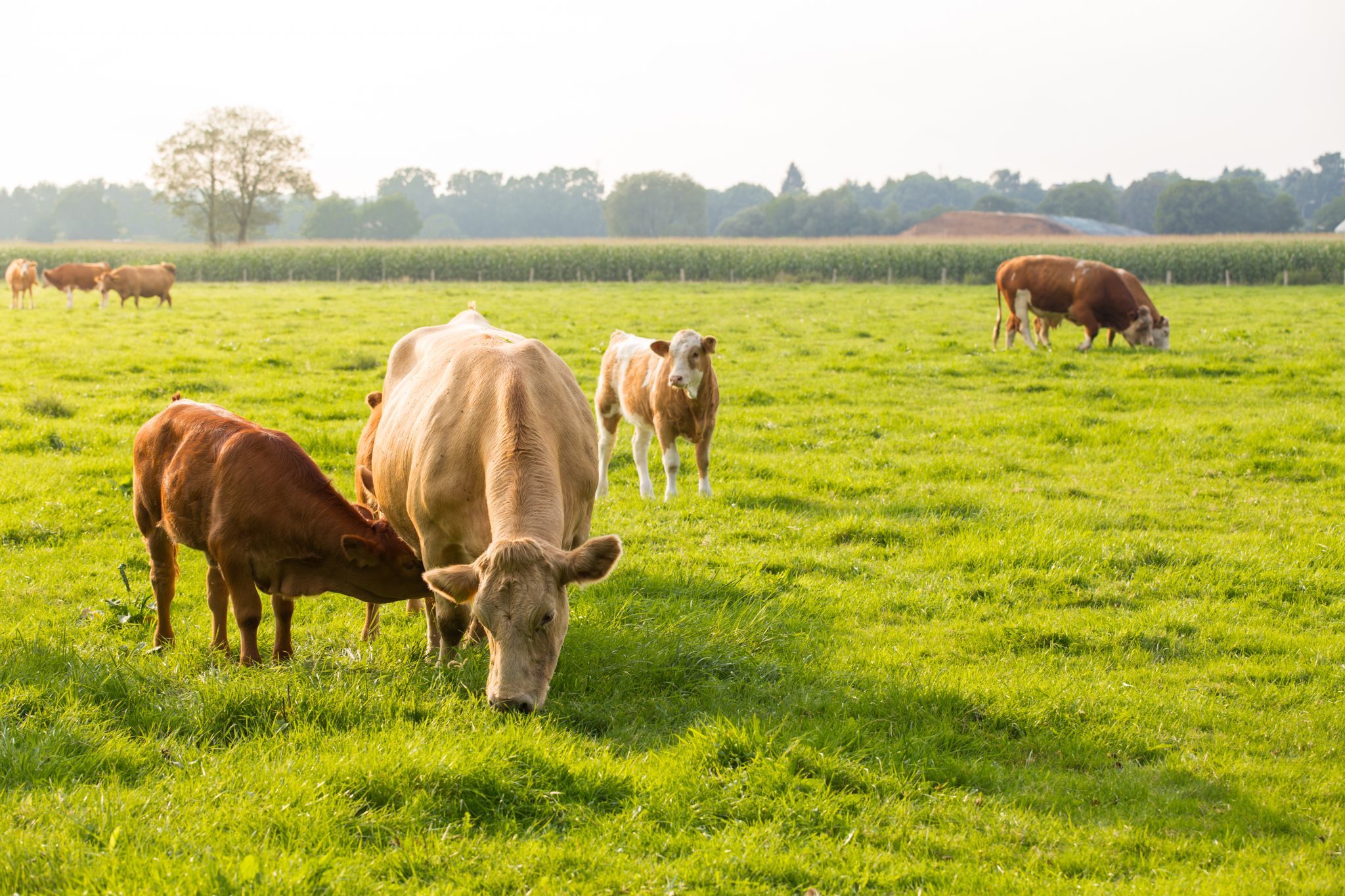Beef

Animal stocking rates offer pasture management guidelines and help provide a balance between livestock and pasture resources.
Defining Stocking Rates
A pasture stocking rate is defined as the number of animals per unit area over a given period (or how long animals are out on pasture). Stocking rates can be thought of in terms of animals per acre or pounds of animal body weight per acre.
Using an appropriate stocking rate for your farm is the first step in managing a sustainable, forage-based livestock system. Through mindful management of stocking rates in beef operations, producers can achieve more grazing days per year, reducing the need for stored forages and feeds and, therefore, enhancing the profit potential of any cattle operation.
Factors Influencing Stocking Rate Decisions
- Soil Fertility. Soil pH and fertility management influence nutrient availability to forage crops, which affects total forage production potential per unit land area.
- Forage Species. Understanding which forage species are adapted to a given land area and production potential of those forages can help provide a baseline for stocking strategies.
- Grazing Management. Level of management influences forage utilization, or how much forage is actually consumed by the animal. More intensive management generally means improved forage utilization.
- Weather and Environment. Significant year-to-year variation in rainfall and temperature trends in Alabama can influence forage production, which may affect stocking rates. For example, drought conditions limit forage production and often require reduced or alternative stocking strategy considerations.
 Practices for Maintaining Stocking Rates
Practices for Maintaining Stocking Rates
- Management and Planning. In order to maintain stocking rates, a forage manager must be thinking ahead of the current situation. Monitoring forage heights, prioritizing pastures in the rotation to be grazed next, and planning for the next season allow the forage manager to consistently use forage resources for livestock.
- Residual. In general, the more closely pastures are grazed, the longer the pasture needs to rest because regrowth is relatively slow. This is because when plants are defoliated close to the ground, there is little residual leaf area remaining, requiring forage plants to use on root reserves for regrowth. This process draws on root energy reserves of the plant, and if continually overgrazed, it can deplete these reserves, decreasing plant persistence over time. Leaving some residual stubble on forage crops can help promote regrowth quickly and long-term plant persistence (table 1).
- Rest and Recovery. Pasture rest after a grazing event allows plants to rebuild energy reserves and produce new, vegetative plant growth that is generally high in nutritive value.
Table 1. Suggested Start and End Grazing Heights for Common Forage Crops in Alabama
| Forage Crop | Begin Grazing–Target Height (In.) | End Grazing–Target Height (In.) |
|---|---|---|
| Bahiagrass | 6–10 | 3-4 |
| Bermudagrass | 4-8 | 2-3 |
| Dallisgrass | 6-8 | 3-4 |
| Tall fescue | 4–8 | 2–3 |
| Annual ryegrass | 6–12 | 3–4 |
Average Stocking Rates for Alabama Beef Cattle Operations
Table 2 shows average stocking rate potential across various soil-climate regions of Alabama. These estimates are based on grazing research trials from around the state. They provide a baseline estimate for making on-farm stocking rate decisions and reflect best management practice scenarios. Individual farm stocking rates may vary based on soil type, animal size and stage of production, forage crop species, grazing management, weather, and environment. They may alter the ranges listed in table 2.
Table 2. Average Stocking Rate Capacity for Beef Cow–Calf Pairs in Alabama Forage Systems
†Estimates based on a 1,300-pound lactating, mature beef cow with a 350-pound calf.
‡Cool-season forages including annual ryegrass, small grains such as rye, wheat, oats, or triticale, and annual clovers (crimson or arrowleaf).
| Geographic Region of Alabama | Forage Species* | Acres Needed Per Cow-Calf Pair* | Stocking Rate (Cow-Calf Pairs/Acre)† |
|---|---|---|---|
| North Alabama | |||
| Tall fescue | 2.0 | 0.50 | |
| Bermudagrass | 1.5 | 0.60 | |
| Cool–season annuals ‡ | 2.2 | 0.45 | |
| South Alabama | |||
| Bahiagrass | 2.0 | 0.45 | |
| Bermudagrass | 1.5 | 0.60 | |
| Cool–season annuals | 2.0 | 0.50 | |
| Black Belt Prairie and West Alabama | |||
| Tall fescue | 1.9 | 0.52 | |
| Dallisgrass | 2.5 | 0.40 | |
| Cool–season annuals | 2.0 | 0.50 | |
| Central Alabama | |||
| Tall fescue | 2.0 | 0.50 | |
| Bahiagrass | 2.0 | 0.50 | |
| Bermudagrass | 1.5 | 0.60 | |
| Cool–season annuals | 2.0 | 0.50 |
Summary
Understanding forage production potential using forages that are well adapted to a given area and having well-defined animal production goals can help producers identify sustainable stocking rates in Alabama pasture systems. Having the correct stocking rate is an essential part of increasing the number of grazing days annually and decreasing dependence on stored forages and feeds in beef cow-calf operations. Improving the focus on grazing management and forage use efficiency through appropriate stocking strategies can help increase profit potential for most livestock operations in Alabama.
Kim Mullenix, Extension Beef Specialist; Assistant Professor; Leanne Dillard, Extension Forage Specialist, Assistant Professor; and Gerald Thompson, Regional Extension Agent, all in Animal Sciences and Forages, Auburn University

